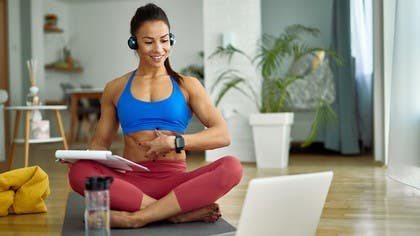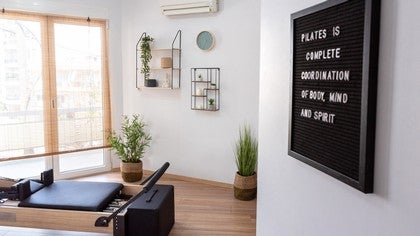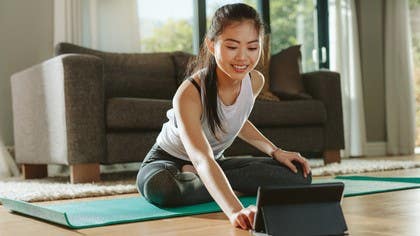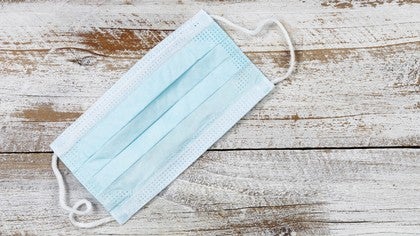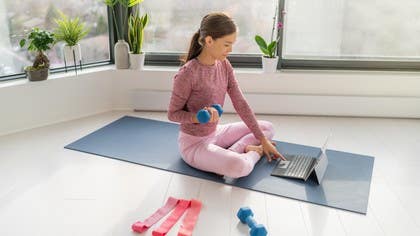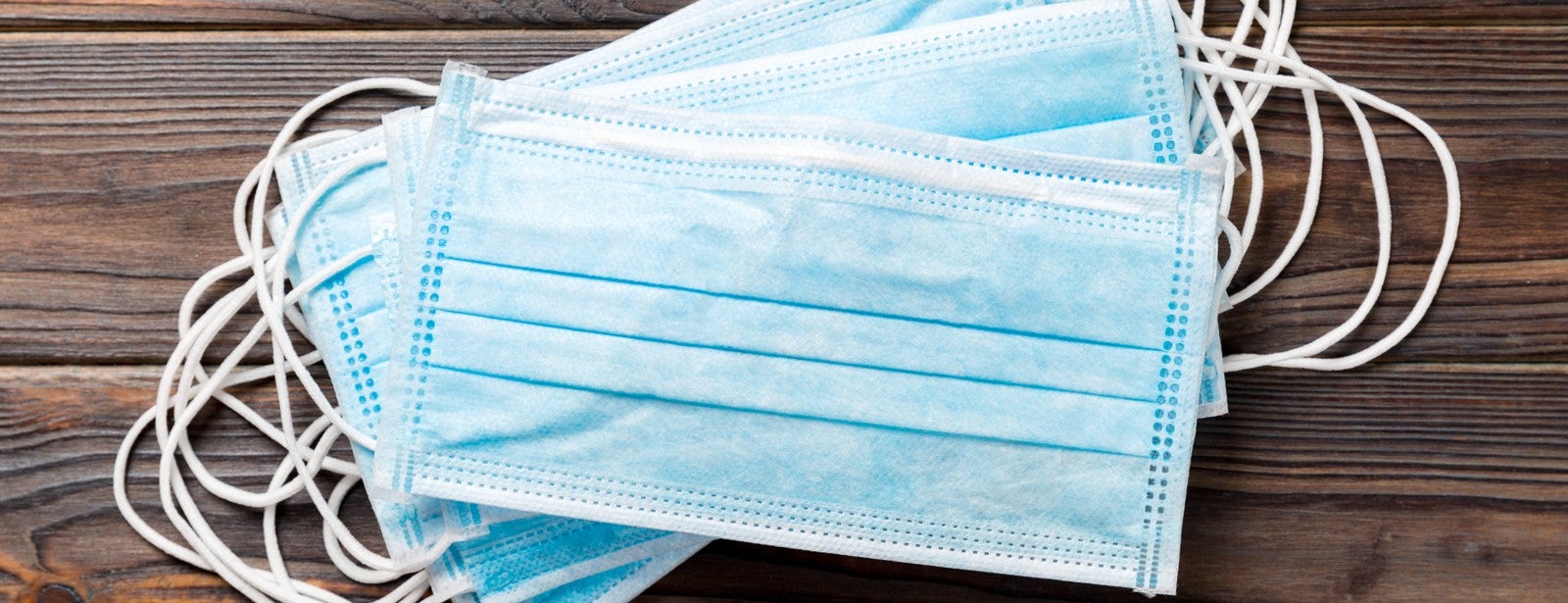
Should I Wear a Mask During a Pilates Session?
Wearing a mask to slow the spread of COVID-19 is a hot topic these days. After initially declining to recommend that everyone wear a cloth mask, the Centers for Disease Control and Prevention (CDC) now recommends that everyone wear a cloth face covering over their nose and mouth in public and with others in a community setting, also known as “universal masking.” What does that mean to Pilates teachers, studio owners, and clients? While each Pilates teacher and practitioner must ultimately decide for themself whether or not to wear a mask in the studio, we’ve provided some food for thought that can help you make the best decision for your health, your studio, and your Pilates practice.
Together with practicing physical distancing (staying six feet apart at all times), frequent hand washing and avoiding touching your face, wearing a mask can help slow the transmission of COVID-19. Unlike the first three actions, wearing a mask is not so much about protecting yourself from the virus. Rather, it’s a way to help to prevent the spread of the virus to others in the event that you are infected but not showing symptoms (being “asymptomatic”). Although research suggests that widespread mask-wearing helps lower the number of transmissions, a cloth mask also sends a message that “we’re all in this together.” A mask provides a clear visual signal that you are taking your own health and other people’s health seriously. It also serves to help normalize wearing a mask, which might have the effect of encouraging those who have resisted wearing a mask to start complying with the CDC’s request, for all of our sakes.
Can you exercise in a mask? And should you?
There’s a lot of concern about mask-less runners and cyclists circulating viral-laden droplets in the air, but experts agree that the risk is low if you are outside and briefly cross the path of a mask-less exerciser. What about Pilates? Pilates sessions tend to take place in small, indoor spaces. While most Pilates practitioners don’t huff and puff the way runners do, deep breathing is central to the practice (“Squeeze every atom of air from your lungs until they are almost as free of air as is a vacuum,” Joseph Pilates wrote in all caps). An early outbreak of COVID-19 was traced to a choir practice. The same powerful breathing that allows singers to project their voices turns out to be quite effective at spreading aerosolized respiratory droplets. As the weather gets warmer, there’s the added danger posed by air conditioning, which recirculates aerosolized respiratory droplets. If possible, studio windows and doors should be left open to allow fresh air to circulate. In a well-ventilated space with few people, the risk to both teacher and student is probably low. Even so, Pilates clients tend to skew older, meaning they are considered a higher risk for contracting the virus.
Teaching during this pandemic is a real test of an instructor’s skill and intuition. Physical distancing means no touching and no tactile cues, only verbal ones. Wearing a mask further depletes the teacher’s tool kit. Facial expression plays a role in cueing and encouraging clients, and that’s harder to see if the lower half of our face is covered by a mask. Another concern is that a mask can muffle the instructor’s voice. There are comfort issues with masks, too. Anyone who has taken a brisk walk while wearing a mask knows that masks quickly become moist and soggy. You will probably be more aware of your breathing while wearing a mask, especially if it’s new for you. Some people report that it feels harder to breathe with a mask. Depending upon the material, masks may have an unpleasant or unfamiliar odor that takes some getting used to.
Another hurdle to wearing a mask is mental or emotional. A Pilates studio is a place to practice self-care. The Pilates session is meant to be the one hour during the week when the client can focus on herself and forget about the outside world. That’s hard to do if everyone is wearing masks. For all of these reasons, not every client will feel comfortable practicing in a studio right now. Some teachers and clients may decide that for the time being, it’s less stressful for everyone to stay home and do the session over Zoom or a similar platform. And that’s fine, too. Ideally, there will be a vaccine at some point and we won’t have to make these accommodations anymore.
Assuming you do plan to wear a mask while teaching or practicing Pilates, what type of mask should you wear?
Because medical-grade or N-95 masks are in short supply, the CDC is requesting that they are reserved for those on the front lines of the pandemic. Cloth masks are easy to find online, with trendy apparel makers now selling them alongside their regular range of products. They can be found near the checkout lines in retail and grocery stores including Target and Whole Foods. They are easy to make at home if you have a sewing machine, with patterns available on the Internet. If you are not handy with a needle, you might ask your local dry-cleaner to make some from any extra fabric you have around the house. Bandannas or buffs (also known as gaiters) also get the job done.
Whatever the material, getting a proper fit is important. The mask should come up to the bridge of your nose and extend all the way down under your chin. There shouldn’t be any gaps around your face; a mask with adjustable ties will enable a snug fit. Use a fresh mask each time you go out. Paper surgical masks are meant to be single-use, while a cloth mask should last a long time. You might want to invest in a few machine washable cloth face coverings so you can always wear a clean one, especially if you use one for exercise.
State and local regulations offer some guidelines on whether and when to wear a mask, but ultimately it’s an individual decision. It’s unfortunate that masks have become politicized in the current political landscape. The bottom line is that wearing a mask is a gracious and generous practice that protects others in the community from the spread of a dangerous virus. Until there is a safe and effective vaccine for COVD-19, masks are one of our best defenses. If you are a studio owner, you will have to decide what you are comfortable with, what your clients are comfortable with, and what policy will result in a session that is safe, effective, and uplifting. Because we all could use a little uplift right now.
Comments

You need to be a subscriber to post a comment.
Please Log In or Create an Account to start your free trial.

